Sobek – Enigmatic Crocodile God Of Ancient Egypt
A. Sutherland - AncientPages.com -Sobek (also spelled Sebek, in Greek' Suchos') was, in ancient Egyptian religion, a god of the violent power embodied in crocodiles and his chief sanctuary, located in Faiyum province.
 This relief from the Temple of Kom Ombo shows Sobek with typical attributes of kingship, including a was-scepter and royal kilt. The ankh in his hand represents his role as an Osirian healer and his crown is a solar crown associated with one of the many forms of Ra. Image credit: Hedwig Storch - CC BY-SA 3.0
This relief from the Temple of Kom Ombo shows Sobek with typical attributes of kingship, including a was-scepter and royal kilt. The ankh in his hand represents his role as an Osirian healer and his crown is a solar crown associated with one of the many forms of Ra. Image credit: Hedwig Storch - CC BY-SA 3.0
This powerful deity with many essential associations was worshiped from at least the Old Kingdom (c. 2700-2200 BC). According to the "Pyramid Texts," Sobek - the 'raging one' - is the son of the goddess Neith. He is the one who 'takes women from their husbands whenever he wishes but also makes green the herbage of the fields and river banks. (PT 507-10)
He is considered one of the oldest deities mentioned in the Pyramid Texts, inscribed on tomb walls. Sobek, the lord of the crocodiles, was depicted with a crocodile head.
Many believed Sobek created order in the universe and the world when he emerged from the "Dark Water" and that he was the creator of the Nile River. He was often associated with fertility. However, due to his somewhat unpredictable nature (ferocity and quick movements), the deity was also associated with chaos.
Who was this larger-than-life deity with the body of a man and the head of a crocodile? Did his worship originate in Faiyum, where he was known as the Lord of Faiyum?
Was Sobek an early fertility god or associated with death and burial before becoming a significant deity and patron of kings in the Middle Kingdom (c.1938–c. 1630 BC)?
Sobek was often shown wearing a plumed headdress with a horned sun disk or the Atef Crown. He was shown to carry a wand and the ankh sign of life in his hands. His sacred animal, the crocodile, was both revered and reviled by the people of Egypt - in some areas, a tame crocodile was worshiped as the god Sobek himself, while in other places, the reptiles were killed.
Left: Map of Egypt; Right: A wall relief from Kom Ombo showing Sobek with solar attributes. Right image credit: Hedwig Storch - CC BY-SA 3.0
Mummified crocodiles representing the god have been found in many ancient tombs. The Egyptians mummified both infant and mature crocodiles and even interred crocodile eggs and fetuses with the deceased to enlist the protection of Sobek in the afterlife.
The Egyptians seemed to both respect and fear the power of the crocodiles, which were not always seen as benevolent. Sometimes, they were believed to be messengers of Seth, the god of destruction.
With a complex nature, Sobek has ties to many other gods. He was associated with Horus because Horus took the form of a crocodile to retrieve the parts of Osiris' body that were lost in the Nile. Yet Sobek was also thought to have assisted Isis when she gave birth to Horus. He was also associated with the cults of specific other deities such as Amus, Osiris, and the sun god in the form of Sobek-Ra.
As often depicted wearing either the headdress of Amun or the sun disk of Ra, Sobek was worshiped as the manifestation of Amun-Re. However, he was also associated with Set, Osiris's enemy.
Legend has it that one of Egypt's first kings, Hor-Aha, built a temple to Sobek in the Faiyum. Sobek was also said to be 'Lord of Bakhu,' the mythological mountain of the horizon, and this epithet is frequently related to him.
The worship of Sobek continued into Ptolemaic and Roman times. Cemeteries of mummified crocodiles have been found in Faiyum and at Kawm. Even in Greco-Roman times, Sobek was honored.
In his Geography, Strabo discusses the Faiyum during his time as the city of Arsinoe, a.k.a. Crocodopolis (the City of the Crocodile). He says, "The people in this Nome hold in very great honor the crocodile, and there is a sacred one there which is kept and fed by itself in a lake and is tame to the priests."
The ancient Egyptians worshiped Sobek from the times of the Old Kingdom to the Roman Period, but the particular prominent time of this worship is dated to the Middle Kingdom. It is attested by the names of several rulers belonging to the 12th and 13th dynasties who had titles like Sobekneferu ("beautiful of Sobek") and Sobekhotep ("Sobek is satisfied").
Written by A. Sutherland - AncientPages.com Senior Staff Writer
Updated December 15, 2023
Copyright © AncientPages.com All rights reserved. This material may not be published, broadcast, rewritten or redistributed in whole or part without the express written permission of AncientPages.com
Expand for referencesHart, G. The Dictionary of Egyptian Gods and Goddesses
Gods and Goddesses of Ancient Egypt
More From Ancient Pages
-
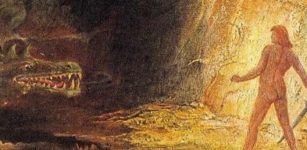 Sigurd Fafnirsbane – Legendary Dragon Slaying Warrior And His Magical Sword
Featured Stories | Oct 30, 2017
Sigurd Fafnirsbane – Legendary Dragon Slaying Warrior And His Magical Sword
Featured Stories | Oct 30, 2017 -
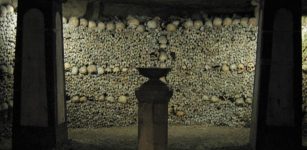 Paris Catacombs: Huge Underground Labyrinth Full Of Secrets
Featured Stories | Jan 3, 2016
Paris Catacombs: Huge Underground Labyrinth Full Of Secrets
Featured Stories | Jan 3, 2016 -
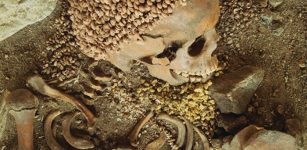 Broken Pebbles In Arene Candide Cave Shed New Light On Ancient Burial Practices
Archaeology | Mar 7, 2017
Broken Pebbles In Arene Candide Cave Shed New Light On Ancient Burial Practices
Archaeology | Mar 7, 2017 -
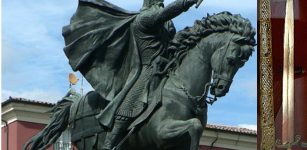 El Cid ’The Lord’ – Medieval Castilian Leader Known For His Courage And Extraordinary Military Skills
Featured Stories | Sep 20, 2021
El Cid ’The Lord’ – Medieval Castilian Leader Known For His Courage And Extraordinary Military Skills
Featured Stories | Sep 20, 2021 -
 Centuries-Old Authorship Mystery – Solved By Stanford Musicologist Jesse Rodin
Archaeology | Jul 18, 2022
Centuries-Old Authorship Mystery – Solved By Stanford Musicologist Jesse Rodin
Archaeology | Jul 18, 2022 -
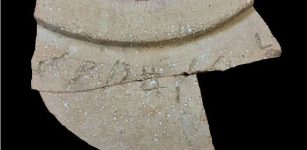 Puzzling Sabaean Inscription Found On A Large Clay Jar Near The Jerusalem Temple Deciphered
Archaeology | Apr 4, 2023
Puzzling Sabaean Inscription Found On A Large Clay Jar Near The Jerusalem Temple Deciphered
Archaeology | Apr 4, 2023 -
 Early Humans Were Walking 7 Million Years Ago – Hominin Fossils Reveal
Archaeology | Sep 1, 2022
Early Humans Were Walking 7 Million Years Ago – Hominin Fossils Reveal
Archaeology | Sep 1, 2022 -
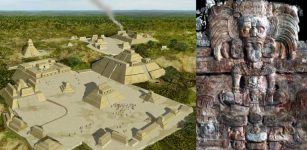 Mysterious Maya Snake Kings And Their Powerful Kingdom In The Jungle Reveal More Ancient Secrets
Civilizations | Apr 23, 2018
Mysterious Maya Snake Kings And Their Powerful Kingdom In The Jungle Reveal More Ancient Secrets
Civilizations | Apr 23, 2018 -
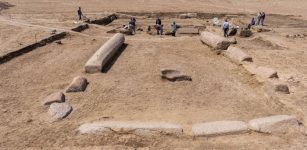 Ancient Temple Dedicated To God Zeus Discovered In Sinai, Egypt
Archaeology | Apr 26, 2022
Ancient Temple Dedicated To God Zeus Discovered In Sinai, Egypt
Archaeology | Apr 26, 2022 -
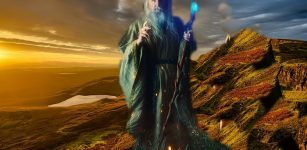 Dian Cécht – Celtic Healer Who Cured Many But Killed His Own Son Of Professional Envy
Celtic Mythology | Sep 19, 2020
Dian Cécht – Celtic Healer Who Cured Many But Killed His Own Son Of Professional Envy
Celtic Mythology | Sep 19, 2020 -
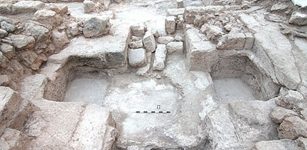 Search For The Elusive Tomb Of The Maccabees – Has The Tomb Finally Been Found?
Civilizations | Sep 23, 2015
Search For The Elusive Tomb Of The Maccabees – Has The Tomb Finally Been Found?
Civilizations | Sep 23, 2015 -
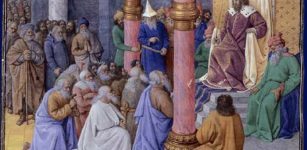 On This Day In History: Cyrus The Great Enters Capital Of Babylon And Allows Jews Return To Their Land – On Oct 29, 539 BC
News | Oct 29, 2016
On This Day In History: Cyrus The Great Enters Capital Of Babylon And Allows Jews Return To Their Land – On Oct 29, 539 BC
News | Oct 29, 2016 -
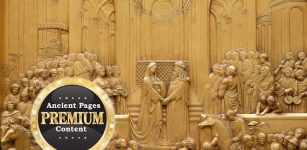 Secret Hidden Freemasonic Messages Concealed In Ancient Egyptian Artifacts And Roman Works – Curious Stellar Symbol – Part 2
Featured Stories | Feb 23, 2022
Secret Hidden Freemasonic Messages Concealed In Ancient Egyptian Artifacts And Roman Works – Curious Stellar Symbol – Part 2
Featured Stories | Feb 23, 2022 -
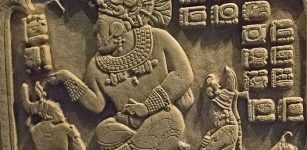 Fall Of The Ancient Maya Civilization Not Caused By Climate Change And Environmental Degradation – Scientists Say
Archaeology | Nov 18, 2021
Fall Of The Ancient Maya Civilization Not Caused By Climate Change And Environmental Degradation – Scientists Say
Archaeology | Nov 18, 2021 -
 How Did Vikings Celebrate Yule – The Winter Solstice?
Ancient Traditions And Customs | Dec 17, 2020
How Did Vikings Celebrate Yule – The Winter Solstice?
Ancient Traditions And Customs | Dec 17, 2020 -
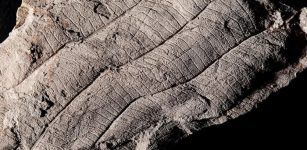 First Leaf Fossils Study Reveals An Ancient 4 Million-Year-Old Forest In Borneo
Fossils | May 3, 2022
First Leaf Fossils Study Reveals An Ancient 4 Million-Year-Old Forest In Borneo
Fossils | May 3, 2022 -
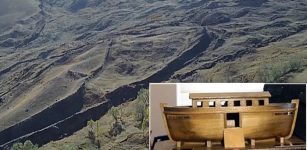 Never Before Seen 3D Images Of Noah’s Ark Finally Revealed To The Public
Archaeology | Nov 17, 2019
Never Before Seen 3D Images Of Noah’s Ark Finally Revealed To The Public
Archaeology | Nov 17, 2019 -
 Mystery Of The Neanderthals – Search For Traces Of Neanderthals’ Lives And Hints Of Their Demise
Archaeology | Sep 26, 2022
Mystery Of The Neanderthals – Search For Traces Of Neanderthals’ Lives And Hints Of Their Demise
Archaeology | Sep 26, 2022 -
 Dragon Man: New Species Of Human May Replace Neanderthals As Our Closest Relative
Archaeology | Jun 26, 2021
Dragon Man: New Species Of Human May Replace Neanderthals As Our Closest Relative
Archaeology | Jun 26, 2021 -
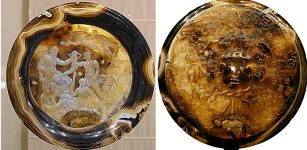 Tazza Farnese (Farnese Cup) – Mysterious, Never Explained And Debated Ancient Gemstone
Artifacts | Aug 31, 2022
Tazza Farnese (Farnese Cup) – Mysterious, Never Explained And Debated Ancient Gemstone
Artifacts | Aug 31, 2022

